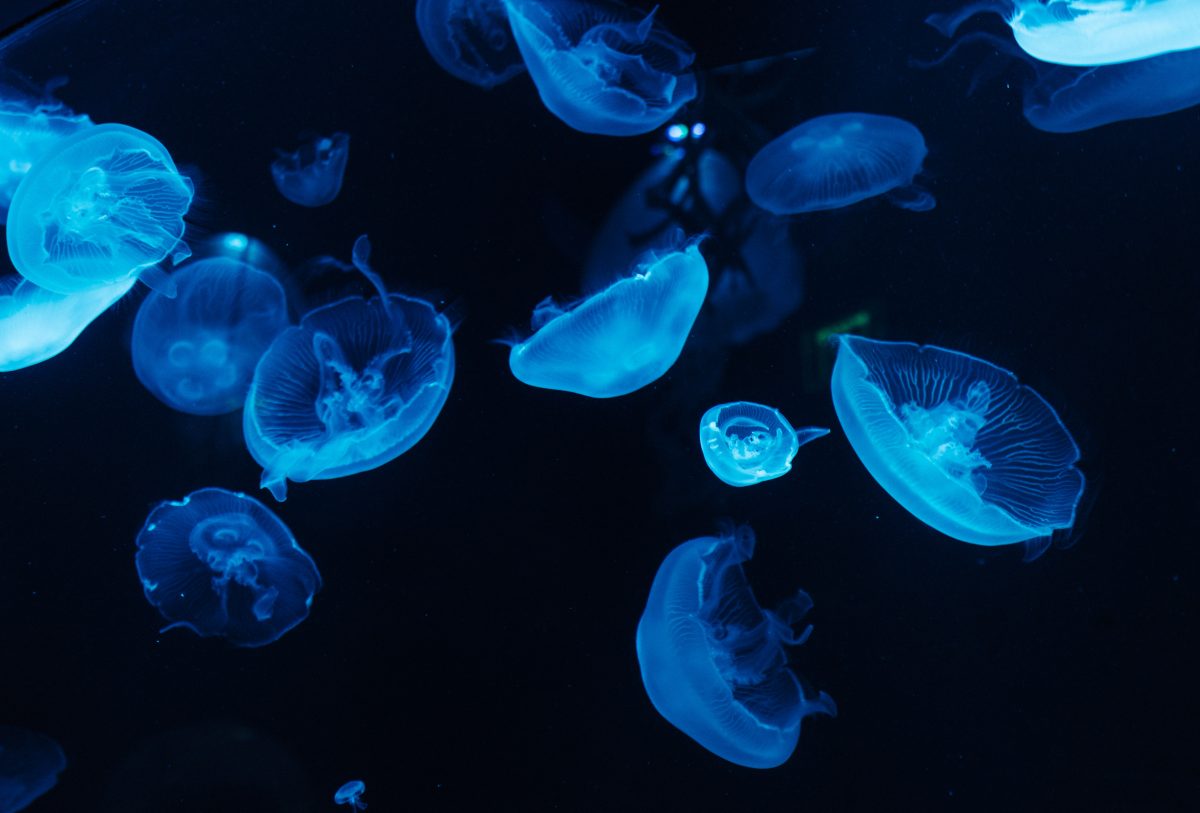There are many great mysteries in life. For example, where do all those odd socks go? Does intelligent alien life exist? And what on earth is at the bottom of the ocean? Shockingly, over eighty percent of our ocean is unchartered, unobserved and unknown. Only 20% of the ocean is actually visible to the eye, leaving a mysterious world beneath the surface that we will explore today. The deep blue is filled with incredible creatures, adapted to survive in places we previously thought were not compatible with life. Although some of these marine species may look like they are from outer space, they are all incredibly resilient, ingenious and savvy.
The Ocean Zones:
The Sunlight Zone
The sunlight zone is the area between the surface of the ocean down to 200 metres and is home to a bountiful amount of light. Microscopic photosynthetic organisms that live in this zone harness sunlight for food and oxygen. A staggering 70% of the oxygen in the atmosphere is produced by marine plants and photosynthetic organisms. These photosynthetic primary producers are the first step in many marine food chains and thus, many marine species live in this zone. In this sunbathed zone you can expect to find polar bears, pelagic stingrays or the green sea turtle.
The Twilight Zone
The twilight zone lies just beyond the rays of sunlight, ranging from 200 to 1,000 meters below the sunlit ocean surface. This zone is a cold, inky black but still teems with enigmatic life including otherworldly creatures such as the wolf eel, terrible claw lobster or sea angel. It also playsa critical role in the marine carbon cycle and is thought to be the gateway to the deep ocean for carbon sequestration.
The Midnight Zone
Lying 1000 to 3000 metres beneath the surface of the ocean in total darkness, freezing temperatures and high pressure is the midnight zone. The constraints of this zone have resulted in some weird and wonderful adaptations. One of the most striking adaptations is the use of bioluminescence, whereby deep-sea creatures cope with the darkness by creating light themselves. Marine species who can cope with these environmental conditions include dumbo octopus’, anglerfish and blobfish (all well worth the google).
The Abyssal Zone
The Abyssal zone is the portion of the ocean deeper than ~3,000 m and shallower than ~6,000 m and can also be known as “the Abyss” – derived from the Greek word meaning “bottomless sea”. This zone is the largest environment for Earth life and covers about 60% of the global surface and 83% of the area of the ocean. The temperature here is near freezing and very few marine species can survive and cope with the extreme pressure. One of these species is the sea pig, who you can find in an army of up to 600 along the sea floor. Alongside the sea pig army, in the dark depths of the Abyssal zone, you can find the terrifying fangtooth, bizarre faceless fish and the ginormous megamouth shark, which can grow up to 7 metres long.
The Hadal Zone
More people have been to the moon than the Hadal Zone making it humanity’s least explored place. The Hadal Zone, much akin to the underworld ruled by Hades in the ancient Greek religion and myth, is a dark, remote and hostile environment. The Hadal Zone is the layer of the deep sea below 6000 m and is found almost exclusively in deep sea trenches. Life in the Hadal Zone was previously thought to be impossible due to the extreme conditions, but deep-sea expeditions have revealed an abundance of resilient and bizarre life. For example, the Hadal snailfish, which has several adaptations to cope with the extreme pressure in the Hadal Zone. Their bodies do not contain any air spaces such as swim bladders and their muscular enzymes are adapted to function better under high pressure. Other than snailfishes, you can expect to see Comb Jellies, Grenadiers and Cusk Eels. The Hadal Zone remains among the most poorly understood and investigated habitats on Earth with every deep-sea expedition revealing something new.
Deep Sea Disruption:
Over the past 50 years, our ocean has absorbed more than 90% of the atmosphere’s excess heat with the remaining 10% melting ice caps and warming the earth’s land surface and atmosphere. The Deep Sea plays a crucial role in climate change mitigation by storing a large quantity of carbon and heat, buffering the warming of surface waters and land. Whilst benefiting humans, deep-sea warming and acidification is having an alarming impact on the creatures that live there. Deep-sea species are particularly sensitive to environmental changes due to their preferred thermal habitats and their limited adaptation capacity. Whilst the ocean has offered a generous buffer against the worst effects of global warming, this buffering capacity is limited, and fragile marine ecosystems are beginning to collapse. There is so much beauty, unknown life and diversity to be discovered in the deep sea. Now is the time to recognise the critical importance and value of deep-sea environments and the bounty of life they contain. Visit, the DSCC to learn more about our deep sea and how you can safeguard the long-term health and resilience of this mysterious but critical environment.
